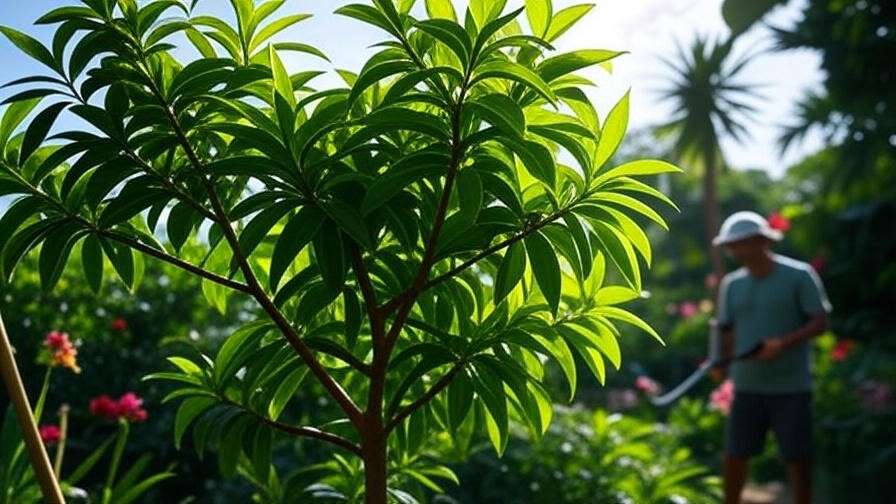Imagine stepping into your garden and harvesting fresh, aromatic cinnamon bark straight from your own tree — a spice haven right at home! Growing a cinnamon tree is a rewarding journey that blends the joy of gardening with the thrill of producing your own spices. Whether you’re a seasoned gardener or a curious beginner, mastering cinnamon tree care can transform your space into a fragrant, tropical oasis. In this comprehensive guide, we’ll share seven expert-backed tips to help you grow a healthy, thriving cinnamon tree, addressing every need from planting to harvesting. Get ready to cultivate a plant that’s as beautiful as it is flavorful!
With the right knowledge, anyone can succeed in cinnamon tree care, even in non-tropical climates. As a horticulturist with years of experience growing tropical spices, I’ve distilled the best practices into this article to ensure your success. From choosing the perfect variety to troubleshooting common issues, this guide is your roadmap to a flourishing cinnamon tree. Let’s dive in and explore how to nurture this exotic gem! 🌴
Understanding the Cinnamon Tree: A Brief Overview 🌳
What Is a Cinnamon Tree?
The cinnamon tree, scientifically known as Cinnamomum verum (also called Ceylon cinnamon), is a tropical evergreen native to Sri Lanka and parts of South Asia. Unlike its cousin, Cinnamomum cassia (common in grocery stores), true cinnamon offers a delicate, sweet flavor prized by chefs and home cooks alike. These trees can grow up to 30–50 feet in their natural habitat but are often kept smaller in home gardens or as potted plants. Their glossy green leaves and slender branches make them a stunning addition to any landscape, while their bark yields the world’s most beloved spice.
Understanding the distinction between Ceylon cinnamon and cassia is key to successful cinnamon tree care. Ceylon cinnamon is softer and easier to grind, with lower levels of coumarin, a compound that can be harmful in large quantities. For home growers, Ceylon is the gold standard for both flavor and safety.
Benefits of Growing Your Own Cinnamon
Why grow a cinnamon tree? Beyond the joy of harvesting your own spice, these trees offer multiple rewards:
- Culinary Delight: Fresh cinnamon bark elevates recipes, from baked goods to savory curries.
- Aromatic Appeal: The leaves and bark release a warm, spicy fragrance, enhancing your garden or home.
- Sustainability: Growing your own spices reduces reliance on store-bought products, promoting eco-friendly living.
- Aesthetic Value: With proper care, cinnamon trees become lush, ornamental plants that beautify any space.
This guide will equip you with the tools to unlock these benefits through expert cinnamon tree care techniques.
Tip 1: Choosing the Right Cinnamon Tree for Your Environment 🌞
Selecting the Best Variety
Not all cinnamon trees are created equal. For home growers, Cinnamomum verum (Ceylon cinnamon) is the top choice due to its superior flavor and ease of cultivation. Cassia varieties, while hardier, produce a harsher spice and are less ideal for home use. Consider your climate and space:
- Tropical Climates: Ceylon cinnamon thrives in USDA zones 10–12, where temperatures stay above 60°F.
- Non-Tropical Areas: Opt for container gardening to bring the tree indoors during cooler months.
- Space Constraints: Dwarf varieties or regular pruning can keep your tree manageable for small gardens or apartments.

Where to Buy Healthy Cinnamon Trees
Sourcing a healthy sapling is critical for successful cinnamon tree care. Look for reputable nurseries or online suppliers specializing in tropical plants. Check for:
- Vibrant Leaves: Healthy trees have glossy, green foliage with no yellowing or spots.
- Strong Roots: Avoid root-bound plants; ask about root health if buying online.
- Supplier Reputation: Choose vendors with positive reviews and guarantees on plant health.
Expert Insight: Always inspect the sapling’s stem for flexibility and avoid brittle or discolored plants, as these may struggle to establish.
Tip 2: Creating the Perfect Growing Conditions 🌴
Climate and Temperature Needs
Cinnamon trees are tropical natives, thriving in warm, humid environments. Aim for:
- Temperature: 70–85°F is ideal, with a minimum of 60°F to avoid stress.
- Humidity: Maintain 50–70% humidity, using misting or a humidifier for indoor trees.
- Non-Tropical Tips: In cooler climates, grow your tree in a greenhouse or indoors near a sunny window. Protect it from drafts and sudden temperature drops.
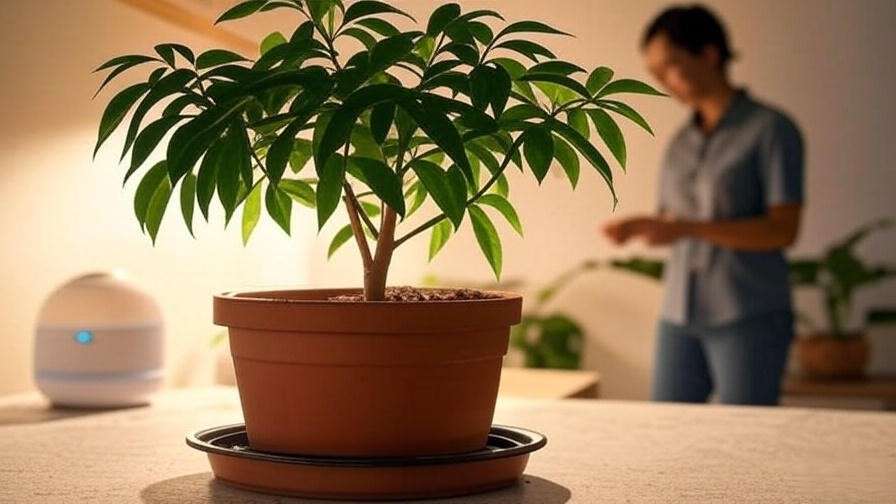
Soil and Drainage
The right soil mix is a cornerstone of cinnamon tree care. Use:
- Soil Type: A well-draining, loamy mix with organic matter (e.g., compost or peat moss).
- pH Level: Aim for 5.5–6.5; test with a soil pH meter and adjust with sulfur or lime if needed.
- Drainage: Ensure pots have drainage holes, and add perlite or sand to heavy soils to prevent waterlogging.
Light Requirements
Cinnamon trees love bright light but can tolerate partial shade:
- Outdoor: Place in a spot with 6–8 hours of direct sunlight, ideally with afternoon shade in hot climates.
- Indoor: Use full-spectrum grow lights (12–14 hours daily) to mimic natural conditions. Rotate the pot weekly for even growth.
- Tip: If leaves appear scorched, reduce direct sun exposure; if growth is leggy, increase light.
Tip 3: Planting Your Cinnamon Tree Properly 🌱
Step-by-Step Planting Guide
Proper planting sets the stage for a thriving cinnamon tree. Follow these steps:
- Timing: Plant in spring or early summer for optimal root establishment.
- Site Preparation: For ground planting, choose a spot with good drainage and partial shade. For containers, select a pot at least 12–18 inches wide.
- Planting Depth: Place the root ball level with the soil surface; avoid burying the stem.
- Watering: Water thoroughly after planting to settle the soil, then maintain consistent moisture.
Ground vs. Container: Ground planting suits tropical climates, while containers offer flexibility for indoor or patio growing. Ensure containers have drainage holes to prevent root rot.
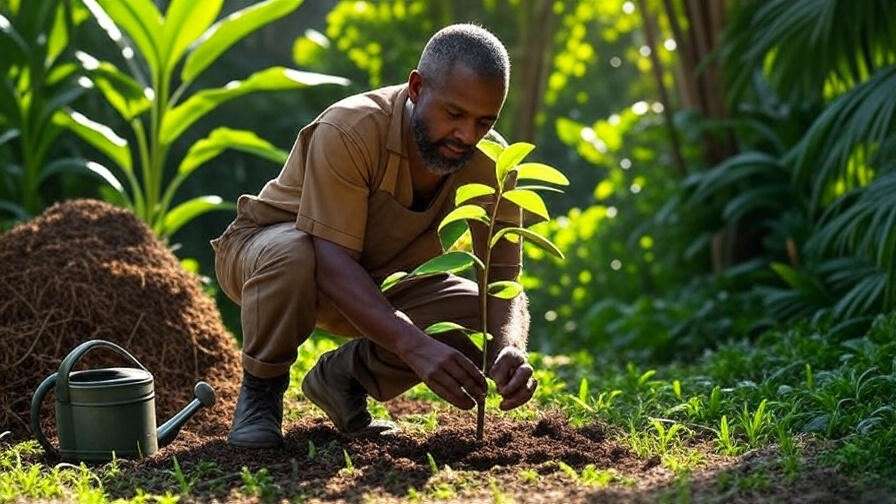
Container Gardening for Cinnamon Trees
For small spaces or colder climates, container gardening is ideal:
- Pot Size: Start with a 12–18-inch pot, upgrading every 2–3 years as the tree grows.
- Material: Terracotta or plastic pots work well; ensure proper drainage.
- Repotting: Repot when roots fill the pot (visible at drainage holes or stunted growth). Gently loosen roots and use fresh soil mix.
Tip 4: Watering and Feeding Your Cinnamon Tree 💧
Watering Best Practices
Watering is a critical aspect of cinnamon tree care. Aim for:
- Frequency: Water when the top inch of soil feels dry, typically every 5–7 days for outdoor trees or 3–5 days for indoor ones.
- Amount: Provide enough water to moisten the root zone without pooling.
- Signs of Issues:
- Overwatering: Yellowing leaves, soggy soil, or root rot. Solution: Reduce watering and improve drainage.
- Underwatering: Wilting or curling leaves. Solution: Water deeply and consistently.
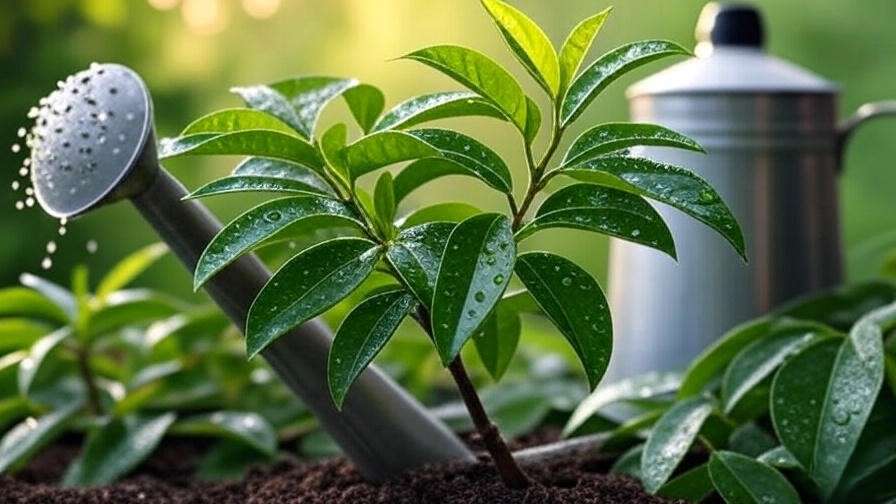
Fertilizing for Growth
Feed your cinnamon tree to support lush growth:
- Fertilizer Type: Use a balanced, slow-release fertilizer (e.g., 10-10-10) or organic options like fish emulsion.
- Schedule: Apply monthly during the growing season (spring–summer); reduce to every 2–3 months in fall and winter.
- Expert Tip: Incorporate compost or worm castings annually for a nutrient boost without synthetic chemicals.
Tip 5: Pruning and Maintenance for Healthy Growth ✂️
Pruning Techniques
Pruning is essential for cinnamon tree care, promoting healthy growth and preparing the tree for bark harvesting. Here’s how to do it right:
- When to Prune: Prune in early spring before the growing season begins. Light trimming can be done year-round to remove dead or damaged branches.
- How to Prune:
- Use clean, sharp pruning shears to make angled cuts just above leaf nodes.
- Remove crossing branches to improve air circulation and reduce disease risk.
- For container trees, maintain a manageable size (3–6 feet) by trimming back leggy growth.
- Tools: Sterilize shears with rubbing alcohol before and after use to prevent disease spread.
- Expert Insight: Regular pruning encourages bushier growth, which can increase bark yield over time.
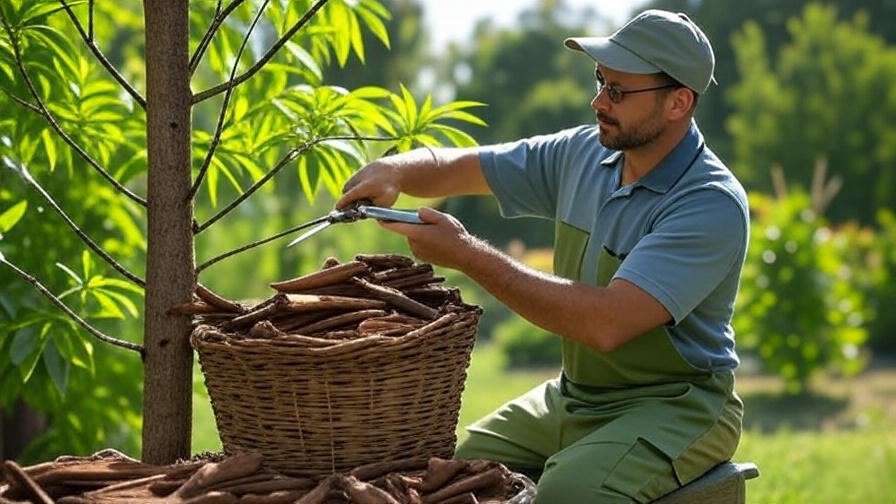
Pest and Disease Management
Cinnamon trees are relatively hardy but can face challenges:
- Common Pests:
- Aphids: Small, sap-sucking insects causing curled leaves. Control with neem oil or insecticidal soap.
- Scale: Hard, shell-like pests on stems. Remove manually or treat with horticultural oil.
- Common Diseases:
- Root Rot: Caused by overwatering or poor drainage. Ensure proper soil mix and drainage to prevent.
- Leaf Spot: Fungal infections from high humidity. Improve air circulation and apply organic fungicides if needed.
- Prevention: Maintain proper watering, avoid overhead irrigation, and plant companions like marigolds to deter pests naturally.
- Expert Tip: Inspect your tree weekly for early signs of trouble, as early intervention is key to maintaining a healthy cinnamon tree.
Tip 6: Harvesting Cinnamon Sustainably 🌿
When and How to Harvest
Harvesting cinnamon is one of the most exciting rewards of cinnamon tree care, but patience is required:
- Timing: Wait 2–3 years for the tree to mature enough for bark harvesting. Harvest during the rainy season or after heavy watering, when the bark is easier to peel.
- Step-by-Step Guide:
- Select Branches: Choose healthy, straight branches (1–2 years old, about 1–2 inches thick).
- Cut and Peel: Use a sharp knife to make shallow cuts and peel the bark in strips. Work carefully to avoid damaging the tree.
- Dry the Bark: Place strips in a shaded, well-ventilated area for 4–7 days until they curl into quills.
- Store Properly: Store dried quills in airtight containers away from heat and moisture.
- Sustainability: Harvest only 20–30% of the tree’s branches at a time to ensure continued growth.
Preserving Your Harvest
To maximize the shelf life and flavor of your cinnamon:
- Storage: Keep cinnamon sticks in glass jars in a cool, dark place; grind into powder only as needed to preserve potency.
- Uses: Beyond culinary applications, use cinnamon leaves for teas or potpourri, and consider roots for medicinal purposes (consult a professional).
- Tip: Label your harvest with the date to track freshness, as cinnamon retains peak flavor for about a year.
Tip 7: Troubleshooting Common Cinnamon Tree Problems 🛠️
Yellowing Leaves or Stunted Growth
If your cinnamon tree isn’t thriving, diagnose the issue:
- Yellowing Leaves:
- Cause: Overwatering, nutrient deficiency, or insufficient light.
- Solution: Check soil moisture, test for nutrient imbalances, and ensure 6–8 hours of light daily.
- Stunted Growth:
- Cause: Root-bound conditions, poor soil, or inadequate humidity.
- Solution: Repot if necessary, enrich soil with compost, and increase humidity with a tray of pebbles and water.
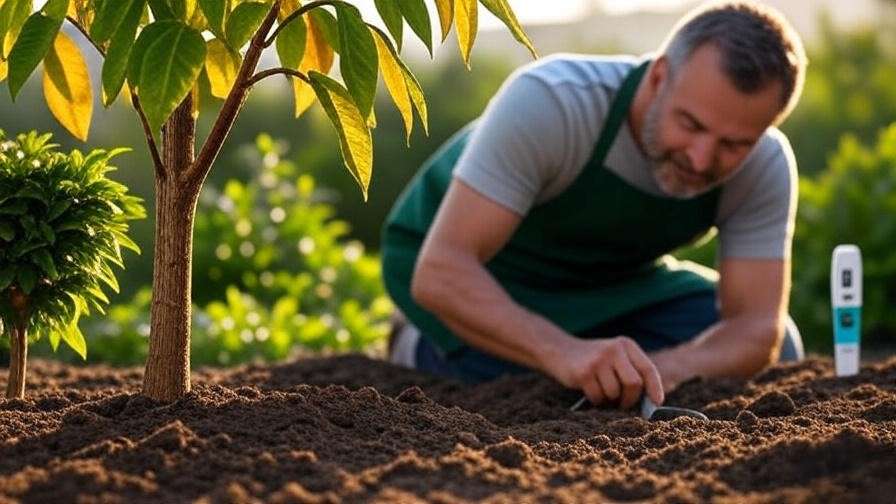
Indoor vs. Outdoor Challenges
- Indoor Issues: Low humidity and insufficient light are common. Use a humidifier and grow lights to mimic tropical conditions.
- Outdoor Issues: Frost, pests, or excessive sun can stress the tree. Protect with frost cloth in winter and monitor for pest activity.
- Tip: Keep a gardening journal to track changes in your tree’s health and adjust care as needed.
FAQs for Cinnamon Tree Care
- Can cinnamon trees grow indoors year-round? Yes, with proper light, humidity, and container care, cinnamon trees thrive indoors.
- How long until I can harvest cinnamon? Typically 2–3 years for the first small harvest, with larger yields after 5 years.
- What if my tree isn’t growing as expected? Check light, water, soil, and nutrient levels; consult a local nursery for region-specific advice.
- Do cinnamon trees attract pests indoors? Rarely, but maintain good hygiene and inspect regularly to prevent infestations.
- Can I grow a cinnamon tree from seed? Yes, but it’s slower and less reliable than starting with a sapling.
Bonus: Enhancing Your Cinnamon Tree Experience 🌟
Creative Uses for Your Cinnamon Tree
Your cinnamon tree is more than just a spice source:
- Culinary Recipes:
- Add fresh cinnamon to chai tea, cinnamon rolls, or savory dishes like Moroccan tagines.
- Use leaves for a subtle, spicy flavor in broths or infusions.
- Home Fragrance:
- Create potpourri with dried leaves and bark scraps for a natural air freshener.
- Boil cinnamon sticks to fill your home with a cozy, spicy scent.
- Wellness: Cinnamon has antioxidant properties; incorporate it into teas or consult a herbalist for safe use.
Sustainable Gardening Practices
Growing a cinnamon tree aligns with eco-friendly gardening:
- Composting: Use kitchen scraps to create nutrient-rich compost for your tree.
- Water Conservation: Collect rainwater or use drip irrigation to minimize waste.
- Biodiversity: Cinnamon trees attract pollinators, enhancing your garden’s ecosystem. Pair with other tropical plants like ginger or turmeric for a spice garden.
Conclusion: Your Path to a Thriving Cinnamon Tree 🌴
Growing a cinnamon tree is a journey of patience, care, and reward. By following these seven essential tips — choosing the right variety, creating ideal conditions, planting properly, watering and feeding thoughtfully, pruning strategically, harvesting sustainably, and troubleshooting effectively — you’ll cultivate a thriving spice haven at home. Whether you’re dreaming of fresh cinnamon sticks for your kitchen or a lush, aromatic tree for your garden, cinnamon tree care is within your reach.
Start today, and soon you’ll be savoring the fruits of your labor — literally and figuratively! Share your cinnamon tree journey in the comments below, join our gardening community, or explore more plant care guides on our website to keep your green thumb growing. 🌿

